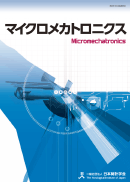Volume 65, Issue 225
Displaying 1-8 of 8 articles from this issue
- |<
- <
- 1
- >
- >|
-
2021Volume 65Issue 225 Pages 1-14
Published: December 15, 2021
Released on J-STAGE: December 28, 2022
Download PDF (2059K)
-
2021Volume 65Issue 225 Pages 15-24
Published: December 15, 2021
Released on J-STAGE: December 28, 2022
Download PDF (2137K) -
2021Volume 65Issue 225 Pages 25-31
Published: December 15, 2021
Released on J-STAGE: December 28, 2022
Download PDF (7498K)
-
2021Volume 65Issue 225 Pages 32-35
Published: December 15, 2021
Released on J-STAGE: December 28, 2022
Download PDF (4452K)
-
2021Volume 65Issue 225 Pages 36
Published: December 15, 2021
Released on J-STAGE: December 28, 2022
Download PDF (2177K) -
2021Volume 65Issue 225 Pages 37
Published: December 15, 2021
Released on J-STAGE: December 28, 2022
Download PDF (469K) -
2021Volume 65Issue 225 Pages 38
Published: December 15, 2021
Released on J-STAGE: December 28, 2022
Download PDF (7376K)
-
2021Volume 65Issue 225 Pages 39-42
Published: December 15, 2021
Released on J-STAGE: December 28, 2022
Download PDF (28292K)
- |<
- <
- 1
- >
- >|
